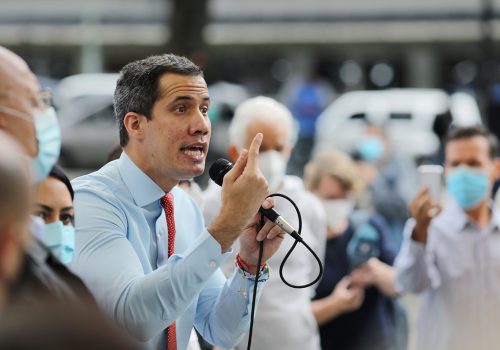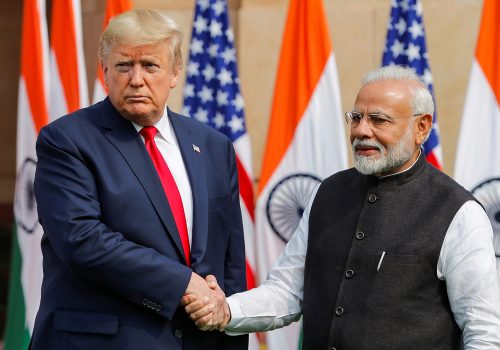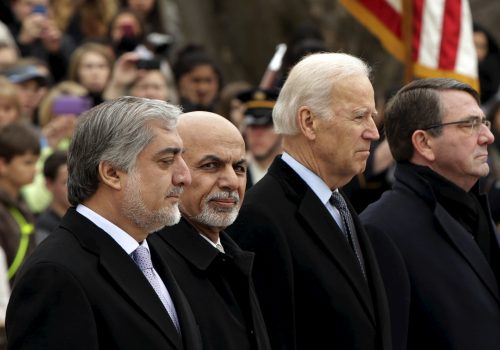FAST THINKING: Get up to speed on India’s new mass protests
GET UP TO SPEED
Mass protests led by Indian farmers are presenting perhaps the greatest challenge to Prime Minister Narendra Modi to date. The protests have drawn in supporters from across Indian society, as farmers vow to dig in outside the capital for months. Why is the new movement so powerful—and how will Modi respond?
TODAY’S EXPERT REACTION COURTESY OF
- Irfan Nooruddin: Director of the South Asia Center
The backstory
- Since taking office in 2014 on a platform of Hindu nationalism, Modi has inspired a chorus of warnings that the world’s largest democracy is on a dangerous illiberal slide. While he weathered demonstrations last year over efforts—which discriminated against Muslim immigrants—to change India’s citizenship rules, Modi faces a much different opponent today. “Mahatma Gandhi famously said that India lives in its villages,” Irfan tells us. “Farmers are numerically and symbolically the most important bloc of India’s population, and agricultural areas have outsized influence in state and national legislatures.”
- At issue is a new law that farmers believe will cut their safety net and leave them at the mercy of corporate elites. But the unrest also reflects broader critiques, such as the idea that Modi governs without consulting the people his policies affect and “consistently favors big industrialists,” Irfan says.
- Tens of thousands of farmers have now been camped outside of New Delhi for two weeks, shutting down traffic along major roads into the city. The movement is attracting other segments of the political opposition, including prominent social-media activists and the leaders of last year’s demonstrations, who “have flocked to support the farmers,” Irfan says. And they’ve now announced a general strike, “which makes it hard for the government to keep [the protests’] intensity under wraps.”
Subscribe to Fast Thinking email alerts
Sign up to receive rapid insight in your inbox from Atlantic Council experts on global events as they unfold.

Why the protests are gaining traction
- In India, Irfan notes, a full 40 percent of the labor force is directly employed in agriculture, and 60 percent of the country’s 1.2 billion citizens ultimately relies on agriculture to make a living. Put simply: “Agriculture dominates.”
- That helps to explain why a seemingly narrow new law could provoke such an emotional response. We asked Irfan to dive into the details. “Farmers, especially small-scale producers, rely on government-regulated markets to sell produce directly to local buyers,” he explains. “The new laws will allow farmers to enter into private contracts with buyers, including corporations, and also to sell across state borders. Although the rules do not remove the existing minimum-price provisions, farmers are still worried that by decreasing the importance of government-run markets and opening up farmers to sell to private buyers, small farmers will lose bargaining power and therefore be taken advantage of by large buyers.”
- To date, Irfan observes, the protests have been centered on the northern states of Punjab and Haryana, which have easy access to New Delhi. “But the concerns raised by these farmers are pan-Indian, with protests developing in other states throughout the country,” he says. “So far, 450 farmer unions and organizations have supported these protests.”
Where this goes from here
- As the protests garner sympathy throughout India and among the Indian diaspora, Irfan notes, the pressure on Modi is increasing—and government forces are lashing out. “Regrettably, as with other protests against the Modi government in the recent past, the farmers faced pushback from the Delhi police, who used tear gas and water cannons against peaceful, unarmed protesters,” he explains. “Legitimate opposition party leaders have been forcibly prevented by the police from joining the protests. On social media, the rhetoric adopted by the Indian government unhelpfully labels protesters as anti-national whenever they seek to exercise their freedom of speech, expression, and protest.”
- He adds: “The current moment will bolster concerns globally about India’s democratic credentials.”
- And while Irfan doesn’t envision Modi losing his grip on power any time soon—the prime minister has successfully weathered democratic challenges in the past—the new movement sends a powerful message, both inside India and abroad: “The protests reaffirm the willingness of average Indian citizens to mobilize collectively to assert their democratic right to resist.”
Further reading
Mon, Dec 7, 2020
FAST THINKING: The next stage of Venezuela’s power struggle
Fast Thinking By
The Trump administration recognized opposition figure Juan Guaidó as Venezuela’s interim president and mobilized nations around the world to do the same. But Nicolás Maduro is still in power—and perhaps even more entrenched after winning control this weekend of the National Assembly in an election boycotted by Guaidó and his allies. What does the election mean for the opposition’s future?
Thu, Nov 19, 2020
The Trump administration can still seal a trade deal with India—and cement a legacy
New Atlanticist By Mark Linscott
An agreement may not be objectively huge in scope but it should be deemed sufficiently significant in resolving difficult market access issues on both sides, warranting a rapid conclusion during this lame-duck moment.
Thu, Nov 12, 2020
How President-elect Biden can reshape US relations in Greater South Asia
New Atlanticist By Shuja Nawaz
With the Taliban feeling increasingly emboldened, President-elect Biden must adopt a new and more practicable strategy for the region that is not based solely on military and security compulsions but includes future-oriented economic and political plans, working with international organizations and partners to achieve common goals.
Image: Photo by Naveen Sharma / SOPA Images/Sipa USA via Reuters


